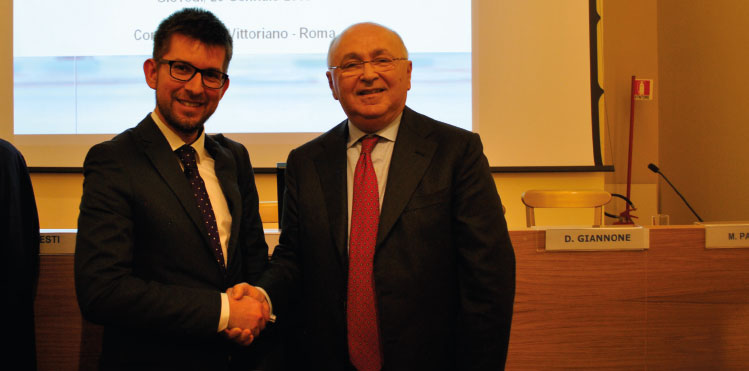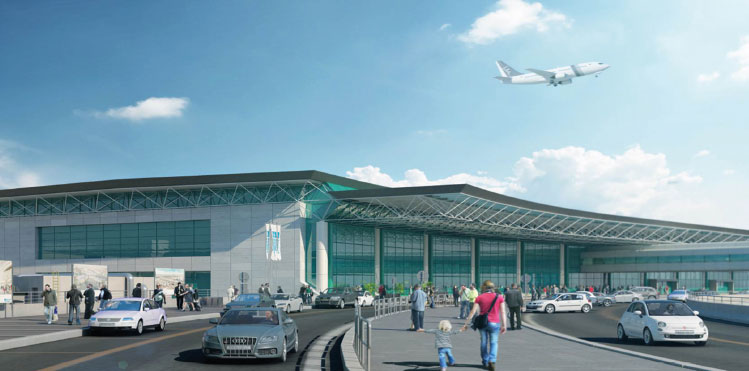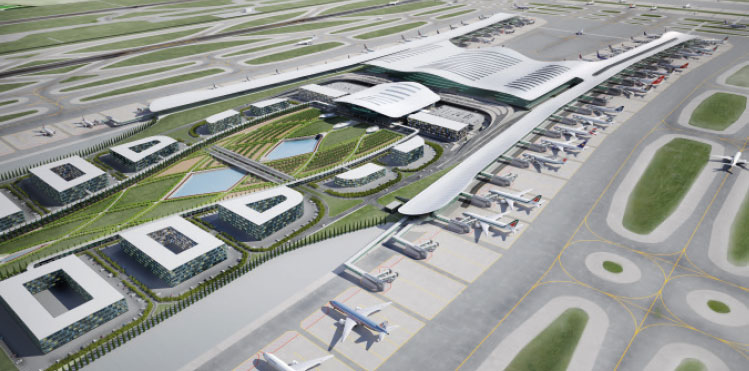
Lorenzo Lo Presti, CEO Aeroporti di Roma, told Airport Business’ Ross Falconer that the new intermodal product will “offer all the carriers an excellent ‘starting point’ to successfully launch long-haul services”.
Aeroporti di Roma is making a major investment in improvements to Fiumicino Airport, which will notably enhance the passenger experience. Speaking to Airport Business in Rome, at the announcement of an important new high-speed rail link, Lorenzo Lo Presti, CEO Aeroporti di Roma, discussed the operator’s ambitious €12 billion infrastructure plans to completely revitalise Fiumicino, which truly focus on the end-to-end travel experience and embrace self-service and digital technologies.
It is clear after just a few minutes in conversation with Aeroporti di Roma’s ebullient CEO Lorenzo Lo Presti that he is dedicated to pursuing a progressive passenger experience strategy. Indeed, this is at the very heart of the €12 billion investment being made in Fiumicino Airport in the period to 2044. It is an investment and strategy built on innovation, with increasing use of self-service technologies, and plans for mobile wayfinding and beacon-enabled retail offers.
Aeroporti di Roma (ADR) is embarking on an ambitious infrastructure plan, building on the myriad successes of 2014 that included strong traffic growth (+6.4% to 43.6 million passengers), the entry of new carriers at Fiumicino, and development of new routes. Lo Presti enthused that this is “only the starting point”. Traffic forecasts show growth to 100 million passengers at Fiumicino by 2044 – the end of the ADR concession.
There are three main elements to the infrastructure plans: a terminal revitalisation programme to increase the level of service and comfort for passengers in existing terminals; the Fiumicino South Completion Plan to double the terminal surface area, and upgrade the apron, taxiway systems and all airport subsystems, including loading bridges, baggage systems and technical plants; and the Fiumicino North Master Plan to extend the current airport boundary to the north with a new terminal, new runways, real estate development, and links to Fiumicino South. These expansion plans, alongside new road and rail connections, are fundamental to achieving the increased passenger traffic expected at Fiumicino.
The total investment in the Rome airport system is huge – €12 billion by 2044. The next key date is October 2016, when the Terminal 3 extension and new Boarding Area F at Fiumicino will be complete, adding a further 90,000sqm to cater for both Schengen and non-Schengen flights.
“Directly related to the terminal extension, we will also complete new baggage systems for Terminal 1 and Terminal 3 to increase capacity and technology standards,” Lo Presti commented.
Attention will then turn to Terminal 1, where a new check-in hall and new Pier A will be completed in 2019. A new Terminal 4 will be the final step in the Fiumicino South Completion Plan. “This is only part of the plan – our attention is already oriented towards Fiumicino North,” Lo Presti added.
Ciampino Airport is another fundamental asset for ADR, which last July delivered a new master plan to Enac – the Italian Civil Aviation Authority. This included the scope to reduce the number of flight movements, taking environmental constraints into account.
Enhancing the self-service offer

Investment in Fiumicino Airport’s Terminal 1 will see a new check-in hall and new Pier A completed in 2019.
Front and centre of these plans is a focus on improving the end-to-end travel experience, and Lo Presti asserted that “only teamwork can support a significant improvement”. An example of this collaborative approach is the recent announcement that ADR and Trenitalia – Italy’s state-owned main train operator – are launching a high-speed rail link connecting Fiumicino with Florence, Bologna and Venice. Fiumicino handled 38.6 million passengers in 2014, and Lo Presti added that “improving accessibility remains central for the sustainable development of the airport, improving the travel experience of all passengers”.
The integration of air and rail is designed to reinforce Fiumicino’s position as the country’s hub. “The citizens of Florence, Bologna and Venice, who currently reach their intercontinental destinations through other European airports, such as Frankfurt and Paris CDG, will be able to plan their journey from the capital’s airport,” Lo Presti explained. “With the new intermodal product, we can offer all the carriers an excellent ‘starting point’ to successfully launch long-haul services.”
Alongside this intermodality, ADR’s commitment to the best possible travel experience includes a dedicated airport guide to assist passengers throughout their journey, and the possibility to access fast-track security.
Travellers in Europe are accustomed to taking control of their airport journey through self-service technologies, and ADR is responding to this demand at Fiumicino, where self-service check-in kiosks and e-gates at immigration are already deployed. Lo Presti enthused about the “positive impact in terms of increasing airport capacity and a better travel experience for passengers”. Building on this success, there are plans to further enhance the self-service offer with the introduction of self bag drop and self-boarding gates, while the number of self-service check-in kiosks and e-gates will also be increased.
Studying beacon-enabled retail offers

The Fiumicino North Master Plan will extend the current airport boundary to the north with a new terminal, new runways, real estate development, and links to Fiumicino South.
Leveraging the increasingly prevalent use of smartphones provides progressive airports with valuable opportunities to improve the travel experience. A new, upgraded version of the ADR app was recently launched, optimising its functionalities and making them more user-friendly. Popular features include the ability to track the status of a flight in real-time, and advance notification of boarding gate or baggage reclaim belt. “We are currently investigating the possibility to provide extra information on baggage status, following the latest IATA recommendations for baggage tracking,” Lo Presti explained.
Meanwhile, beacons have been heralded as the future in communicating with passengers at every step of the airport journey. ADR is certainly being proactive, and is studying a project to utilise beacon technology to communicate information and retail promotions to travellers. “It would be good to use this new technology to engage with passengers, entertain them before their flight, and assist them as a personal navigator through the airport,” Lo Presti commented. “Mobile technology allows direct and real-time communication with passengers like nothing before, and access via smartphone to our website is growing exponentially. Therefore, it is important for us to be ready to respond to the changing needs of our travellers.”
Our time in Lo Presti’s company highlighted that ADR is responding proactively to the evolving desires of travellers. His passion for delivering a progressive and ambitious strategy across Fiumicino shines through, and this will significantly enhance the passenger experience, reinforce its position as the key Mediterranean hub, and further grow the long-haul market.







